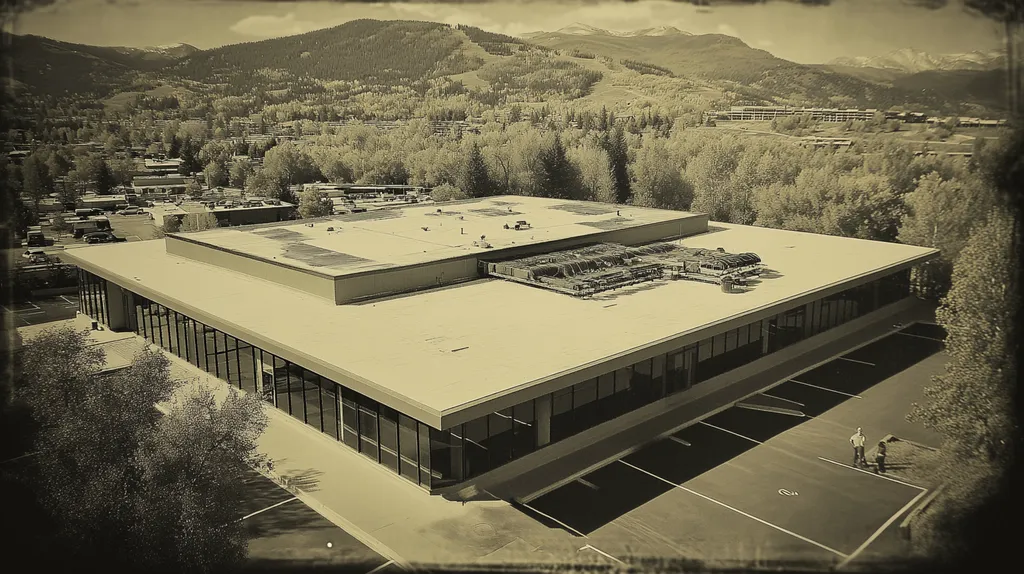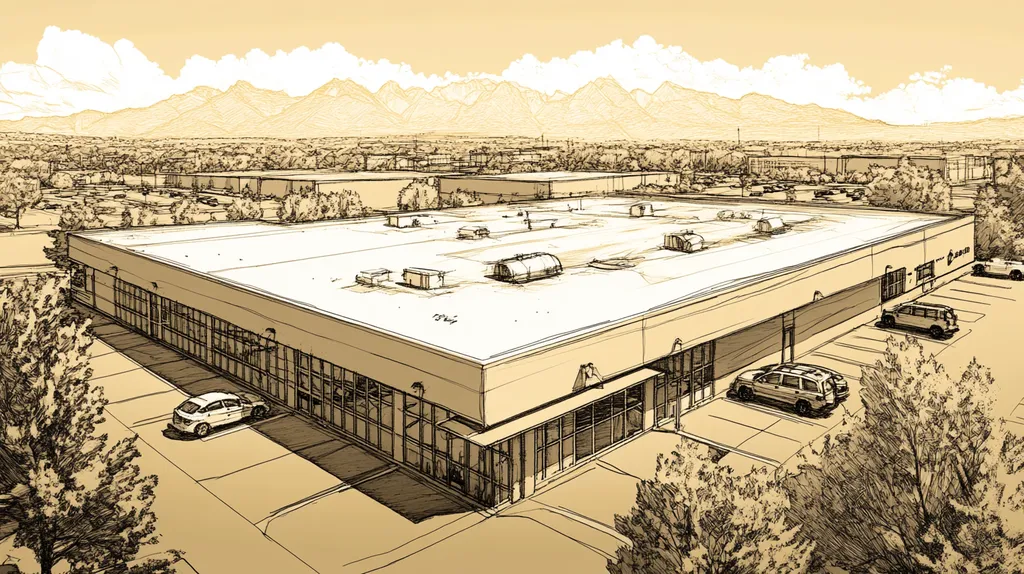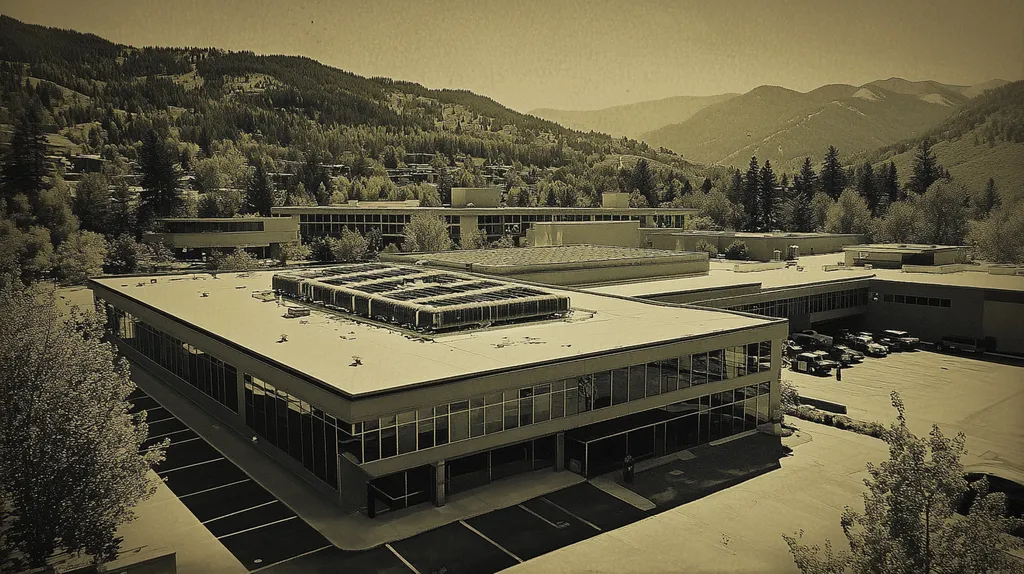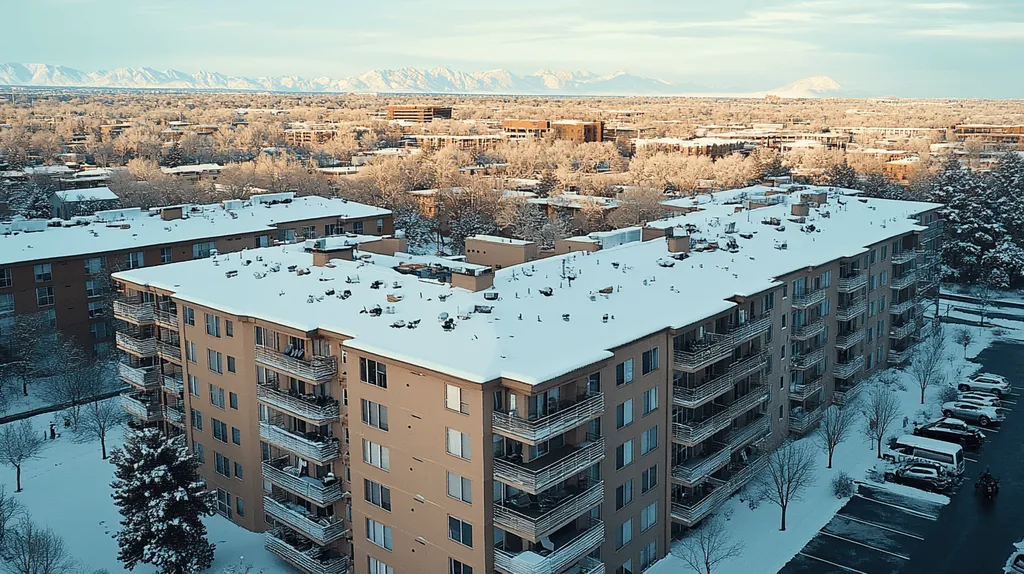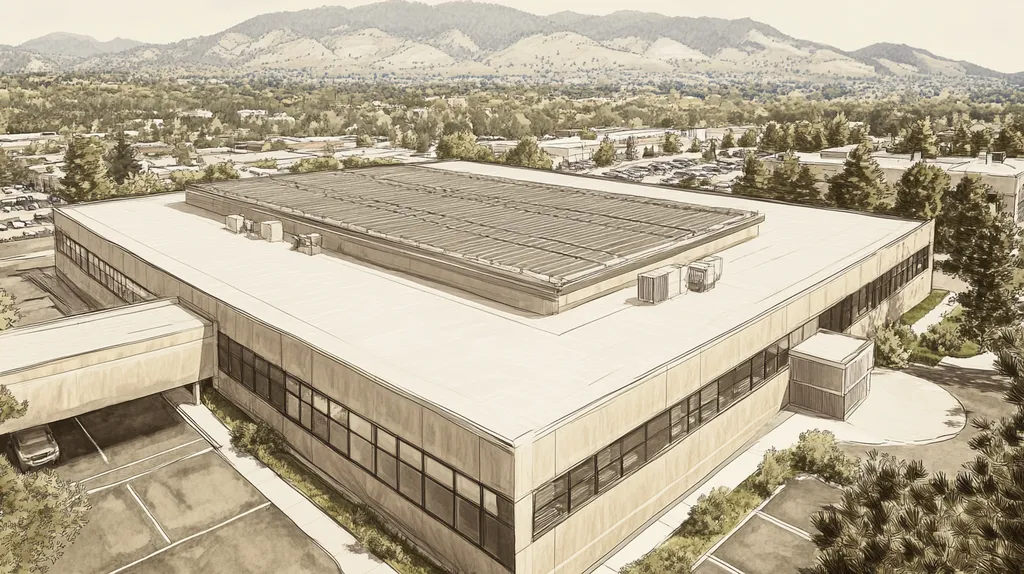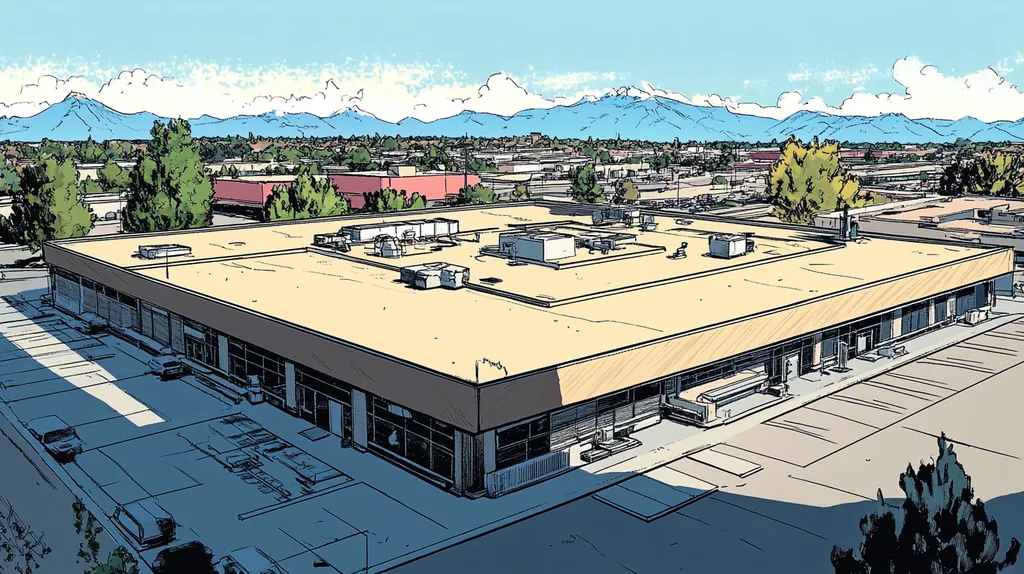Studies show that commercial property owners lose an estimated $3.3 billion annually due to poorly planned roof coating investments and premature system failures.
For facility managers and property owners, selecting and maintaining the right roof coating system represents a critical decision that impacts both immediate costs and long-term asset value.
This comprehensive guide examines the essential factors for maximizing return on roof coating investments, from performance metrics and financial considerations to compliance requirements and risk management strategies.
SECTION 1: PERFORMANCE FACTORS
For property owners, maintaining the value of investments hinges significantly on roofing choices. Alarmingly, studies reveal that as many as 30% of commercial roofs suffer early failures due to poor material selection and maintenance practices. To safeguard these investments, understanding the key performance factors of roof coatings—including their types, durability, and energy efficiency—is essential. This section will explore these critical considerations to empower property professionals in making informed decisions.
Roof Coating Types and Selection
Choosing the right roof coating is vital for ensuring lasting protection and optimal performance. Among the available options are acrylic, silicone, and polyurethane coatings, each with distinct characteristics suited for various conditions and building types.
For example, silicone coatings excel in waterproofing, making them ideal for regions with heavy rainfall, while acrylic coatings are known for their superior UV resistance but may not withstand standing water as effectively. Recognizing these differences enables property owners to select the best option tailored to their specific needs.
Moreover, decisions should factor in local climate, building use, and budget constraints. A thorough assessment ensures the selected coating aligns with performance goals and remains economical throughout its lifespan.
Key Action Items
Durability and Lifespan Evaluation
Roof coating durability plays a critical role in preserving the value of investments. High-quality coatings enhance a roof’s lifespan by defending against environmental risks. Factors like UV exposure, moisture, and temperature variations substantially influence a roof’s longevity.
For instance, energy-efficient coatings that reflect heat can dramatically reduce thermal cycling, a major contributor to roof deterioration. Property managers should analyze test data and manufacturer warranties to estimate the expected lifespan of different coatings.
Additionally, conducting regular inspections can reveal minor issues before they escalate into costly repairs. Taking a proactive stance significantly boosts both the roof coating’s durability and the overall financial health of the property.
Key Action Items
Energy Efficiency and Reflectivity
Energy efficiency significantly influences both operational costs and the sustainability of buildings. Utilizing reflective roof coatings can substantially lower energy consumption by minimizing heat absorption, resulting in reduced cooling costs. Research indicates these reflective coatings can decrease rooftop temperatures by up to 30 degrees Fahrenheit.
This reduction in temperature translates into less strain on HVAC systems, thereby enhancing overall energy efficiency. Furthermore, energy-efficient roof designs can increase property attractiveness and potentially raise market value, as tenants increasingly seek sustainable options.
Additionally, certain coatings are eligible for energy-efficient building incentives and certifications, further encouraging property owners to invest wisely. Adopting energy-efficient solutions not only impacts the bottom line favorably but also aligns with broader corporate sustainability initiatives.
Key Action Items
SECTION 2: FINANCIAL CONSIDERATIONS
In today’s climate of rising operational costs, understanding the financial aspects of roof coatings is more critical than ever. Roofs constitute a substantial portion of a building’s overall expenses, placing property owners in a pivotal position to enhance or undermine their investments. By taking a strategic approach to assess initial costs, potential returns, and ongoing maintenance, property professionals can unlock significant long-term savings. This section highlights essential financial considerations that every property manager should evaluate.
Initial Investment and Cost Analysis
The initial costs of roof coatings can differ widely, influenced by factors such as material choice, installation complexity, and building size. Understanding the full scope of the initial investment is essential for property owners. While traditional roofing systems may appear cheaper upfront, they often incur more frequent repairs and replacements over time.
On the other hand, investing in high-quality roof coatings might involve a higher upfront expense, but these coatings typically extend the lifespan of the roof significantly. Most coatings come with warranties lasting between 10 to 30 years, providing both peace of mind and predictable financial planning. Analyzing these various costs enables property owners to make decisions aligned with their financial goals.
Moreover, it’s important to factor in any potential disruptions during the application of coatings. Some products allow for installation with minimal disruption, while others may require substantial preparation work. Evaluating these factors will lead to a more accurate financial assessment.
Key Action Items
ROI and Energy Savings Calculations
Return on investment (ROI) serves as a vital benchmark for property owners evaluating roof coatings. The financial advantages frequently encompass more than just the restoration; notable energy savings are also achievable. For example, reflective coatings can reduce cooling expenses by as much as 30% in warmer regions.
To effectively calculate ROI, one must consider energy savings along with possible increases to property value. Coatings that enhance insulation improve thermal performance, bolstering HVAC efficiency and lowering energy bills. Conducting a thorough energy audit can help quantify these savings, providing a clear projection of potential long-term benefits.
Additionally, property professionals should be aware that energy-efficient roofing may qualify for compliance credits, increasing ROI. There may also be government incentives or rebates for implementing energy-efficient upgrades that further incentivize investment.
Key Action Items
Maintenance Cost Reduction Strategies
One of the most compelling benefits of roof coatings is their potential to significantly lower maintenance costs. For traditional roofing systems, regular upkeep typically accounts for 1-2% of the property’s value on an annual basis. In contrast, roof coatings generally require less frequent maintenance interventions.
When well maintained, these coatings help to minimize repair expenses by averting common issues, such as leaks that often plague older roofs. Regular inspections, coupled with proactive maintenance, can greatly extend the life of the coatings, helping property owners avoid costly repairs. Experts recommend conducting roof checks every three to five years to stay ahead of potential problems.
Furthermore, the initial investment in high-quality coatings is frequently counterbalanced by lower repair costs and reduced downtime. This cost-effective aspect is particularly significant for properties that cannot afford interruptions. Shifting from reactive maintenance to a preventive approach with roof coatings can yield substantial savings over time.
Key Action Items
SECTION 3: COMPLIANCE REQUIREMENTS
Adhering to compliance requirements in commercial roofing is essential for safeguarding investments and maintaining operational integrity. Ignoring these vital regulations can lead to severe financial repercussions, including fines and legal challenges. Alarmingly, recent studies indicate that more than 25% of property owners encounter penalties due to non-compliance. By grasping the nuances of regulatory standards, environmental responsibilities, and warranty obligations, property professionals can elevate the value and longevity of their roof coatings.
Regulatory Standards and Codes
Meeting regulatory standards and building codes is a crucial requirement for any roofing project. Local and state regulations dictate not just the materials used, but also how they should be installed. Many jurisdictions now mandate compliance with specific energy efficiency standards when applying roof coatings.
Failure to adhere to these codes can result in costly delays and penalties. Authorities may require inspections at various project phases, and non-compliance could necessitate expensive rework. Therefore, property managers must familiarize themselves with the specific codes that apply to their locale.
Additionally, the International Building Code (IBC) sets nationwide standards that serve as a foundational guideline. Incorporating these regulations early in the planning phase can facilitate smoother execution and boost investment value.
Key Action Items
Environmental Compliance Considerations
Environmental compliance is increasingly vital in the commercial roofing sector. Many roofing materials, especially coatings, must adhere to specific standards designed to ensure sustainability. This includes compliance with regulations regarding Volatile Organic Compounds (VOCs), which can adversely affect indoor air quality.
Roofing systems that meet environmental guidelines can enhance a property’s marketability. For instance, utilizing low-VOC coatings not only fulfills legal requirements but also attracts eco-conscious tenants or buyers.
Ignoring environmental obligations can lead to severe risks, including legal liabilities and increased remediation costs. Investing in compliant coatings creates long-term savings through reduced energy consumption and improved overall building performance.
Key Action Items
Warranty and Liability Requirements
Understanding warranty and liability requirements is essential when selecting roof coatings. Warranties provide a safety net for property owners but come with specific compliance stipulations. Not adhering to these conditions can void warranties, leading to significant financial disadvantages.
Manufacturers often require compliance with certain application procedures and environmental conditions for their warranties to remain valid. Property managers must diligently review these stipulations prior to initiating any work since failing to meet them can result in costly repairs down the line.
Additionally, securing adequate liability insurance coverage is crucial. Working with reputable manufacturers ensures sufficient protection against unforeseen issues. Employing certified contractors for proper installation can reduce risks and further enhance warranty coverage.
Key Action Items
SECTION 4: RISK MANAGEMENT
Managing risks in commercial roofing is essential to protect your investments from the unpredictable forces of nature. Weather-related incidents, such as heavy rains, hailstorms, or extreme temperatures, can inflict serious damage if not adequately addressed. The National Oceanic and Atmospheric Administration (NOAA) estimates that severe weather costs billions annually to property owners. Recognizing these risks and implementing preventative strategies is vital in minimizing potential problems. This section discusses evaluating weather impacts, detecting leaks, and creating emergency repair plans to safeguard property value.
Weather Impact and Damage Assessment
Your roofing system is the primary barrier against harsh weather conditions, making it crucial to understand how various elements can affect its integrity. For example, UV radiation can gradually deteriorate roofing materials, leading to premature failures if left unchecked.
Regular inspections before and after severe weather events are essential. These evaluations help spot visible damage, such as cracked seams or blistering. Utilizing technology like infrared thermography can reveal hidden moisture issues that may be compromising the roof’s performance.
Additionally, property managers should familiarize themselves with how specific roofing types react to weather conditions. For instance, flat roofs are prone to water pooling, necessitating more frequent inspections during rainy seasons.
Key Action Items
Leak Detection and Prevention Methods
Leak detection is crucial, as unnoticed leaks can lead to extensive structural damage and expensive repairs. Therefore, implementing effective leak detection systems is essential. Advanced monitoring technologies, such as moisture sensors, provide real-time alerts for potential leaks, enabling swift action.
Regular maintenance routines, including inspections and debris removal from gutters, help prevent water accumulation that can trigger leaks. A systematic approach to inspections, focusing on potential trouble spots, is beneficial.
Moreover, using quality materials to seal joints and flashings can deter leaks before they start. This preventative strategy often proves to be more cost-effective than addressing significant water damage later.
Key Action Items
Emergency Repair and Response Plans
Every property manager should have a well-defined emergency response plan to handle roofing emergencies effectively. Such a strategy is vital for mitigating damage from severe leaks or storm-related injuries, as rapid response can significantly reduce risks.
Establishing relationships with reliable roofing contractors ensures prompt assistance in emergencies. Pre-assessing contractors’ capabilities facilitates quicker responses during critical situations.
Training your staff on emergency procedures ensures everyone is aware of their roles during a roofing crisis. This preparedness can alleviate panic and enhance communication during urgent moments.
Key Action Items
SECTION 5: OPERATIONAL PROCEDURES
The effectiveness of a commercial roof coating depends heavily on robust operational procedures. Inadequate application and neglecting maintenance can lead to significant financial losses. Alarmingly, around 25% of roofs fail within the first five years due to improper installation or lack of follow-up care. By understanding the best practices for application, scheduling regular inspections, and implementing quality control measures, property managers can better protect their investments in roof coatings.
Coating Application Best Practices
Applying roof coatings requires careful attention and expertise in the specific materials used. A key practice is ensuring the roof’s surface is thoroughly clean and dry before application. Any contaminants or moisture can hinder adhesion, leading to ineffective results. Using appropriate primers is also critical for enhancing the bonding between the coating and the substrate, which significantly impacts longevity.
Environmental conditions, such as temperature and weather, are pivotal to the success of the application. Ideal temperatures for coating application range from 50°F to 90°F, and coatings should never be applied during rainy conditions or high winds, as these can greatly affect performance.
Employing skilled professionals for the application is essential. Their experience ensures that the right thickness of the coating is applied, which affects durability and resistance to UV radiation and harsh weather. Documenting each step of the application process creates valuable records for future inspections and maintenance.
Key Action Items
Inspection and Maintenance Scheduling
Regular inspections and proactive maintenance are vital for preserving roof coatings investments. A recommended practice is to schedule inspections twice a year, ideally during the spring and fall. This timing allows facility managers to identify and address emerging issues before they escalate into costly repairs.
During inspections, managers should look for signs of wear, such as cracks, blisters, or peeling. Identifying these problems early can prevent them from causing significant damage. Utilizing drone technology can enhance inspections by providing detailed views of hard-to-reach areas.
Integrating maintenance tasks into the overall facility management strategy ensures consistency and effectiveness. Simple actions, like cleaning debris from the roof, can extend the system’s life and improve performance. A comprehensive maintenance history also serves as a crucial asset for property owners in evaluating the roof’s condition over time.
Key Action Items
Quality Control and Assurance Measures
Implementing quality control during the coating process is essential for avoiding future issues. Establishing a checklist for application helps ensure that all crucial steps are followed correctly, including checking surface preparation and the environmental conditions on application day.
Performing post-application inspections is equally important. These checks help confirm uniformity and verify the correct thickness of the applied coating, which is vital for long-term performance.
Using certified materials from reputable manufacturers enhances quality assurance. Such materials often come with performance guarantees, which bolster confidence in the roofing system. Additionally, fostering communication between applicators and property managers builds transparency and allows for quick identification of potential issues.
Key Action Items
SECTION 5: OPERATIONAL PROCEDURES
The effectiveness of a commercial roof coating depends heavily on robust operational procedures. Inadequate application and neglecting maintenance can lead to significant financial losses. Studies indicate that nearly 25% of roofs fail within the first five years due to improper installation or lack of follow-up care. By understanding best practices for application, scheduling regular inspections, and implementing quality control measures, property managers can better protect their investments in roof coatings.
Coating Application Best Practices
Applying roof coatings is crucial and demands precision. One key practice is ensuring that the roof’s surface is clean and dry; contaminants or moisture can compromise adhesion, resulting in ineffective results. Using the right primers is essential to enhance bonding between the coating and the substrate, significantly impacting longevity.
Environmental conditions, particularly temperature and weather, are vital for successful application. Ideal temperatures for coatings range from 50°F to 90°F, and coatings should never be applied during rain or high winds, as these can drastically affect performance.
Employing skilled professionals for coating application is critical. Their expertise ensures the correct thickness is applied, impacting durability and resistance to UV radiation and harsh weather. Thorough documentation of the application process creates valuable records for future inspections and maintenance.
Key Action Items
Inspection and Maintenance Scheduling
Regular inspections and proactive maintenance are essential for preserving roof coatings investments. It is common to schedule inspections semi-annually, ideally in spring and fall. This timing allows property managers to identify and address emerging issues before they escalate into costly repairs.
During inspections, managers should focus on signs of wear, including cracks, blisters, or peeling. Early detection can help prevent significant damage. Utilizing drone technology can enhance inspections by providing views of hard-to-reach areas.
Incorporating maintenance tasks into the overall facility management strategy ensures consistency and effectiveness. Simple actions, like cleaning debris from the roof, can significantly extend the roofing system’s lifespan. A comprehensive maintenance history also serves as a valuable asset for property owners in evaluating the roof’s condition over time.
Key Action Items
Quality Control and Assurance Measures
Implementing strong quality control measures during the coating process can prevent future problems. Establishing a checklist for application helps ensure that all crucial steps are followed correctly, including verifying surface preparation and environmental conditions.
Performing post-application inspections is equally important. These checks ensure uniformity and verify the correct thickness of the applied coating, which is vital for long-term performance.
Utilizing certified materials from reputable manufacturers enhances quality assurance. Such materials often come with performance guarantees, boosting confidence in the roofing system. Additionally, maintaining open communication between applicators and property managers fosters transparency and allows for quick identification of potential issues.
Key Action Items
The Bottom Line
With commercial roofing failures costing property owners over $3.3 billion annually, maximizing roof coating investments has never been more critical for protecting asset value.
Strategic coating selection, professional application, and systematic maintenance represent the cornerstones of effective roof management.
Property managers who implement comprehensive inspection schedules, leverage emerging coating technologies, and maintain strict quality control measures consistently achieve 15-20% longer roof lifespans.
The future of commercial roofing lies in data-driven decision making, with smart monitoring systems and predictive maintenance becoming industry standards.
By following the guidelines and checklists outlined in this report, property professionals can significantly reduce risks while maximizing their return on roof coating investments.
FREQUENTLY ASKED QUESTIONS
Q. What performance factors should I consider for my commercial roof?
A. Key performance factors include coating types, durability, and energy efficiency. Understanding these can help property owners choose suitable roof coatings that meet their specific conditions and budget, ultimately protecting their investments.
Q. How do financial considerations impact commercial roof coatings?
A. Financial factors include initial investment, long-term maintenance costs, and potential ROI. By assessing these aspects, property professionals can gain insights into how different roof coatings can benefit their budget and minimize long-term expenses.
Q. What compliance requirements affect industrial roofs?
A. Compliance requirements involve adhering to local building codes, regulatory standards, and environmental guidelines. Understanding these regulations helps ensure that roofing projects maintain legal integrity and avoid potential fines or complications.
Q. How can I manage risks for my commercial roof?
A. Managing risks involves conducting regular inspections, implementing leak detection methods, and establishing emergency repair plans. Addressing these areas can help mitigate damage and protect the overall value of your property.
Q. Why are operational procedures critical for commercial roof coatings?
A. Proper operational procedures ensure effective application, consistent inspections, and maintenance. Following best practices minimizes failures and boosts the long-term performance and durability of the coatings, protecting your investment.
Q. What are the best practices for applying roof coatings?
A. Best practices include cleaning and drying the surface, using appropriate primers, and hiring skilled professionals. Adhering to ideal application conditions enhances bonding and increases the longevity of the roof coating.
Q. What factors should I evaluate when selecting roof coatings?
A. Consider factors like the type of coating, environmental conditions, and budget. Evaluating warranties and long-term maintenance needs can also guide your decision in selecting the right coatings for optimal performance.

